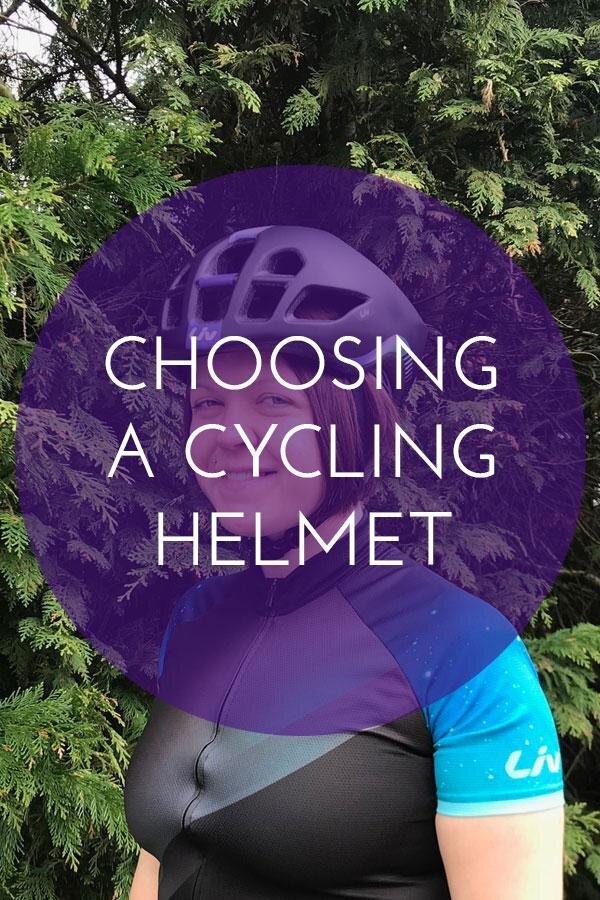
Choosing a cycling helmet
A cycling helmet is an essential piece of kit, for the obvious reason that it can save your life. They are designed to protect the head from impact and injury in case of an accident. Although it’s not required by law to wear a helmet, if you are going to be racing or joining a club, then helmets are compulsory.
Cycling helmets have come a long way in recent years with evolving technology. There are a few things to consider when choosing a helmet:
Riding style
Your choice of helmet will be depend on whether you are a road cyclist, mountain biker, time-trialist, commuter or leisure rider. A mountain bike helmet will usually offer more coverage and come with a visor to protect the face. Time trial helmets are teardop shaped and designed for maximum aerodynamics. If you usually cycle as part of a commute, you might want to consider a neon coloured helmet or one with built-in lights for maximum visibility.

Fit
A helmet should feel comfortable and snug on the head. Most manufacturers have a size chart on their websites- to find your size, simply run a tape measure around your head about an inch above your eyebrows. Some helmets have a more oval shape internally, whereas others are more rounded. You may need to try several different brands and models to find the best fit.
When fastened, you should have enough space to fit two fingers between the buckle and your chin. The straps should form a V-shape just below your ears. Turn the ratchet dial at the back of the helmet to adjust the fit and check that there are no pressure points on your head.

Ventilation
Helmets will usually have several openings which channel air through as you are riding. More air vents will keep your head cooler especially in the summer months, whereas a more enclosed helmet will protect your head from wind and rain. Generally, more air vents will result in a lighter weight helmet.
Safety
Make sure your cycling helmet is certified and labelled with a US Snell B90/B95 standard or European standard CE mark test (either EN 1078:1997 or EN 1080:1997). This ensures it has met rigorous safety testing standards. Some manufacturers actually offer a crash replacement service where they will supply a replacement helmet if yours is damaged in a crash. It’s also recommended to replace your cycling helmet every five years as they do weaken over time.
Padding
The interior of the helmet will usually have foam padding to provide comfort and absorb sweat. The pads are usually removable for cleaning and sometimes have anti-bacterial properties.
Weight
A lighter helmet will be less noticeable on your head and therefore more comfortable. Usually, the more you pay for a helmet, the lighter it will be due to the material it is constructed from. Higher-end helmets may be made from carbon or polycarbonate.
Liv Extima Aero Road Helmet
Since upgrading my bike, I’ve been wearing the Liv Extima Aero Road Helmet. Liv specialise in female specific cycling gear and bikes, with the geometry based on women’s body dimensions.
The Extima is one of Liv’s more expensive helmets, owing to the amount of technology that has gone into developing this design. This helmet has been designed for improved aerodynamics and airflow- it’s almost a hybrid of a TT helmet and road helmet. Most of the top of the helmet is enclosed, but the strategically placed AeroVent ports are designed to suck air through the internal AeroVent channels, cooling the head and maximising aerodynamics.
I’ve worn this helmet in a variety of weather conditions from 10°c and torrential rain, to 23°c and blazing sunshine. I’m impressed with how lightweight, sleek and comfortable it is to wear. I’ve not noticed any dramatic improvement in my riding speed just by changing my helmet, but it’s all about marginal gains!
Of course, I love matching my helmet to my bike so the matt black with green and purple decals looks great with my Liv Envie Advanced 1.

Liv helmet was sent for review but all opinions are my own.
What type of cycling helmet do you wear? How often do you replace your helmet?
This is such a great guide, very useful! I hate wearing helmets as they are usually so uncomfortable and leave me lots of marks on my forehead. I currently own a helmet which somebody gave me so I really need to get myself something much better as this helmet is so uncomfortable!